Deep in the Northern Thing: The Saga of the Volsungs, translated by Jesse L. Byock
Murder begets murder, everybody dies, usually badly, and the gods are bastards. Those are the lessons taught in The Saga of the Volsungs, the history of the doomed Volsung family. The historical events reflected in the saga took place between the end of the 4th and beginning of the 5th centuries AD, a period of great tribal migrations and unrest among the Germanic people of Central and Eastern Europe.
Starting around 1000 BC, tribes from the region now called Scandinavia began migrating south and west into present-day Germany, pushing out the Celtic tribes, before running up against the Roman Empire along a frontier that extended from the mouth of the Rhine River and all along it and the Danube River to the Black Sea. To the east, German kingdoms stretched as far as the Pontic Steppe in modern Ukraine and Russia. At the end of the 4th Century AD, the Huns came roaring out of the distant East and began conquering or driving out the German tribes in Eastern and Central Europe. The historic destruction of the Kingdom of Burgundy by the Huns in 436 AD is a major part of the saga, though scaled down from war to a family feud. It is in this age of chaos and death that the stories of the Volsungs were born. The oldest artistic representations of the Volsunga Saga are found in stone carvings in Ramslund, Sweden, but it wasn’t written down until the late 13th century, in Iceland. The more well-known German telling of the story, The Nibelungenlied, was written earlier, about 1200 AD. Wagner drew on both as sources for his epic four-opera cycle, The Ring of the Nibelung.
If the courtly tales of King Arthur and Roland point toward high fantasy, this German legend and its ilk point straight to sword & sorcery. There are no great heroes moved by devotion to home and family to pursue noble deeds, only murderers driven by greed or vengeance to commit deeds of great violence. Good and evil are abstractions that have no place in a blood-drowned age. The violence is direct and driven by personal motives far more often than by ideals or the needs of any kingdom.
The Saga of the Volsungs begins with the pettiest of murders and continues to spiral downwards in an unending cycle of murders over many generations. Sigi, believed to be a son of Odin (king of the Aesir gods), murders the thrall, Bredi, because he proved to be a better hunter. Sigi is declared an outlaw and driven from his home for the crime. He ends up in the land of the Huns where he becomes their king. As an old man, his brothers-in-law, desirous of his wealth and power, kill him. Sigi’s son, Rerir, absent from the battle, survives.
When Rerir felt that he had established his footing in the kingdom he recalled his grievances against his maternal uncles, those who had killed his father. The king gathered a large force and marched against his kinsmen. He felt that they had already done him so much harm that he could place little value on their kinship. And so, with this reasoning he acted, not stopping until he had killed all his father’s slayers, although such action was appalling by all accounts. Then Rerir took over land, wealth, and power. He became an even more influential man than his father had been.
When Rerir and his unnamed wife prove infertile, Odin sends a “wish-maiden”, Hjod, with a magic apple for the couple. After eating it, their son, Volsung, is conceived. When Volsung comes of age, Hjod is sent by her father, the giant, Hrimnir, to be his bride. They have ten sons and a daughter. The eldest son is the handsome and brave Sigmund and his twin sister, the most beautiful Signy.
Volsung’s palace is built around a great tree, Barnstock, that grows up through the roof. According to translator Jesse L. Byock, the tree is called an eik (oak) at one point and an apaldr (apple tree) later. Additionally, he writes, “Apaldr, however, may have a further symbolic meaning, possibly associated with the apple tree of the goddess Idunn. Barnstokkr may also be identified with the world tree Yggdrasil.”
Siggeir, King of Gautland (Geatland), asks Volsung for Signy in marriage. Despite Signy’s reluctance, her father and brothers consider it an “advisable” match. At the wedding banquet, things take a strange turn, and events are set in motion that spell the doom of Volsung’s line.
It is now told that when people were sitting by the fires in the evening a man came into the hall. He was not known to the men by sight. He was dressed in this way: he wore a mottled cape that was hooded; he was barefoot and had linen breeches tied around his legs. As he walked up to Barnstock he held a sword in his hand while over his head was a low-hanging hood. He was very tall and gray with age, and he had only one eye. He brandished the sword and thrust it into the trunk so that it sank up to the hilt. Words of welcome failed everyone. Then the man began to speak: “He who draws this sword out of the trunk shall receive it from me as a gift, and he himself shall prove that he has never carried a better sword than this one.”
Until Sigmund, all who attempt to draw out the sword fail. Volsung’s eldest son pulls the sword out with ease. When Siggeir offers his new brother-in-law three times the sword’s weight in gold for it, Sigmund answers:
“You could have taken this sword from where it stood, no less than I did, if it were meant for you to carry it; but now that it has come first into my hands, you will never obtain it, even should you offer me all the gold you own.”
Infuriated, Siggeir immediately begins plotting to steal the sword and avenge himself for the perceived insult. His plan culminates in the death of Volsung and nine of his sons. These killings are followed by more killings, incest, assorted werewolfery, and torture. Finally, Sigmund and his son, Sinfjolti avenge Volsung and his sons, murdering Siggeir and his family. Despite her hatred of her husband, Signy won’t break her marital vows and willingly dies in the conflagration set by her brother burning down Siggeir’s palace.
More betrayal and murder afflict the Volsung clan before its greatest son is born. Sigurd (Siegfried in the Nibelungenlied) is born after the death of his father, Sigmund, at the hands of a rival. Armed with the same sword Sigmund pulled from Barnstock, Sigurd will eventually avenge his father. What’s more, he will kill Fafnir the dragon and acquire his treasure, cursed though it may be, because the god Loki stole it in order to pay for a killing he, Odin, and Hoenir, had committed.
“Loki saw Andvari’s gold. And when Andvari had handed over the gold he held one ring back. But Loki took it from him. The dwarf went into the rock and said the gold ring would be the death of whoever owned it, and the same applied to all the gold.
The best-known events of The Saga of the Volsungs, thanks to Wagner, include the slaying of Fafnir, and Sigurd riding through the flames to discover Brynhild who may or may not be a Valkyrie and is the sister of King Atli, aka Attila. But it’s the unraveling of the Volsung clan over the generations that I believe is the real story. It’s why I’ve included such a lengthy summary of the book’s first half, concentrating as it does on the tangled web of murder and betrayal that leads up to Sigurd’s birth. It’s never stated explicitly, but the Volsungs are a family whose beginnings are in the murder of an innocent man, and the weight of that sin is a generational curse. While the family’s success incites unwarranted jealously among rivals and in-laws, the Volsungs always seem to bring their doom upon themselves as repayment for the crimes they have committed. Sigmund murders the first two of Signy’s sons for cowardice and two more born later for warning Siggeir of his approach. Alas, even Sigurd, an audacious hero of great fearlessness is flawed; he readily tricks Brynhild so his brother-in-law can marry her — an act that precipitates his own murder.
They used these and many other kinds of witchcraft. And with this nourishment and Grimhild’s persuasions and everything else, Guttorn became so violent and fierce that he promised to do the deed. They promised him great honor in return. Sigurd did not expect such deceit. He could not prevail against either his fate or his death. Sigurd also did not perceive he was deserving of betrayal from them.
Another important strand connecting the generations of Volsungs is the involvement of Odin. It is never explained why the lord of Asgard concerns himself with the affairs of men. He appears repeatedly throughout the story, sometimes helping, sometimes harming the Volsungs. The sword he drives into Barnstock is the only one that will allow Sigurd to kill Fafnir, but Odin breaks it during Sigmund’s final battle, depriving him of victory and ensuring his death. Brynhild is trapped behind a wall of fire as punishment for helping a king succeed in a battle over a king Odin wanted to win.
In the German Nibelungenlied, most of the supernatural elements are pushed to the side or eliminated altogether, and the emphasis is shifted towards courtly manners, which is a big part of why Wagner turned away from it and to The Saga of the Volsungs for continued inspiration. For the Icelanders, it’s all darkness, magic, and a dangerously meddlesome and inscrutable king of the gods. In the last lines of The Saga of the Volsungs, Odin appears and betrays the sons of Sigurd’s widow, Gudrun, for no clear reason.
In the action the brothers had not observed their mother’s wishes, as they had used stones to wound. Now men attacked them, but they defended themselves bravely and well, killing many of the attackers. Iron was of no avail against the brothers. Then a one-eyed man, tall and ancient, came up and said: “You are not wise if you do not know how to kill these men.” King Jormunrek answered: “Advise us how, if you can.” He said: “You should stone them to death.” Thus it was done and from all directions stones flew at them. So ended the lives of Hamdir and Sorli.
The Saga of the Volsungs is not a straightforward read by any stretch. There are passages, Byock indicates, that possess little logic or are simply missing words. The various parts of the saga are a bit of a jumble, some clearly reflecting historical events, while others, strange and mythic ones. Much is believed to come from the Elder Edda, a presumed, though lost, Icelandic collection of pagan legends. Somehow, stories of cursed treasures, dragon-slaying, and other supernatural elements got mingled together with a convoluted family history replete with murder, then spread across the Germanic world, all the way from the great Frankish towns to barren Iceland. That’s actually a great technical aspect of the story. One can easily imagine a skald telling tales of Siegbert I, a Frankish king and possible model for Sigurd, and deciding it would sound so much better if Siegbert killed a dragon before being murdered by his brother at his sister-in-law’s instigation. Oh, and what if it wasn’t simply his sister-in-law, but a valkyrie he had betrayed who had him killed?
Ancient Germanic stories, and this story, in particular, are where some of the deepest roots of fantasy are found. In the second half of the 19th century, William Morris, one of the first fantasy authors, along with Eiríkur Magnússon, made the first English translation of the saga. Morris then went on to write a 10,000 line poem: The Story of Sigurd the Volsung and the Fall of the Niblungs.
During the 1930s, JRR Tolkien would do his own translations of parts of the saga and fill in some of the missing bits, though his effort wasn’t published until 2009 as The Legend of Sigurd and Gudrún. Nonetheless, as with Beowulf (reviewed here previously), the professor found inspiration (as well as bits to be pillaged), in the history of the Volsungs, especially in the flawed, but brave, Sigurd. The sort of perfidy, bloody-minded vengeance, and murder that litters The Silmarillion and its attendant works can all be found in The Saga of the Volsungs. The dark-hearted Northern Thing so many fantasy authors have been enamored of finds its apotheosis in the tragedy of Sigurd and his family.
The Saga of the Volsungs is a stark collection of stories that reflect a world long passed, one of constant violence and social upheaval. It provides insight into how the people who told these stories saw the world around them: a god-haunted place where even the bravest of men faced unexpected disaster and death. For them, only chaos and darkness were assured. For the Germanic tribes, death didn’t promise paradise, only endless warfare in preparation for Ragnarǫk, the total destruction of the world and of the gods themselves. This is one of the great collections of European myth and, perforce, one of the great ur-texts of fantasy.
__________________________________________________________________________________________________________________
Fletcher Vredenburgh writes a column each first Friday of the month at Black Gate, mostly about older books he hasn’t read before. He also posts at his own site, Stuff I Like when his muse hits him.
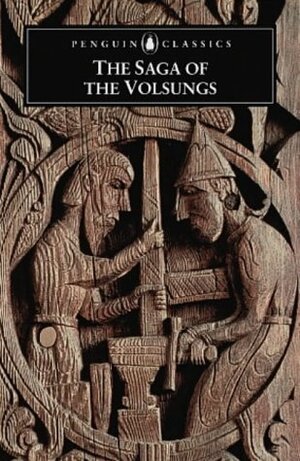

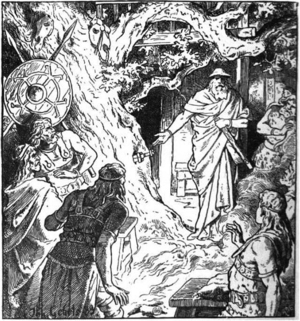
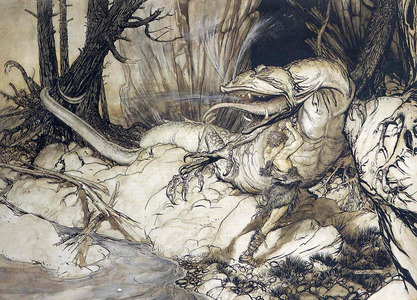
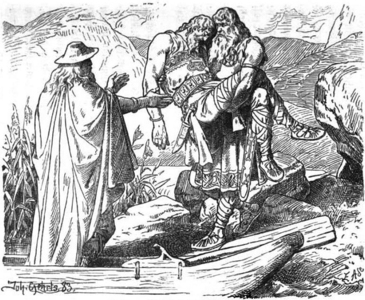
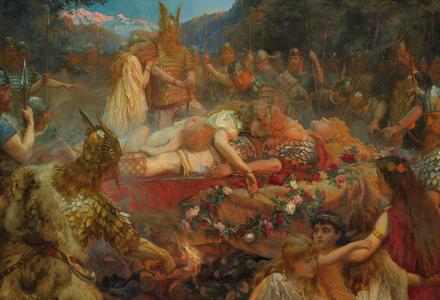
Michael Dirda called the sagas spaghetti westerns with swords.
I like that take
I recently watched Dark Kingdom: The Dragon King https://www.imdb.com/video/vi3600810265 Not a bad stab at the Nibelungenlied
Cool, I’ll look for that. I’ve watched part of Fritz Lang’s 4.5 hour Die Nibelungenlied
https://www.youtube.com/watch?v=3x_j4VlEnRc
Toss in the bit about Sigmund’s sword being broken and the shards only reforged when his son and heir, Sigurd, comes along, and, boy, do we see some influence on our beloved Prof. Tolkien? I think we do.
Yep, as well as a cursed ring, and there you go
Fascinating! (I always thought Wagner more or less made up the storyline for his cycle) – I guess the saga could also be seen as a cautionary tale? Inversely, that it’s stressing the importance of good behaviour re maintaining social stability? Don’t conspire against others, hold grudges etc….
I really want to read Tolkien’s take, where he presents Sigurd as a pagan prefiguring of Christ.
Excellent post! Thank you, sir.
[…] “Deep in the Northern Thing: The Saga of the Volsungs, translated by Jesse L. Byock“—”This is one of the great collections of European myth and, perforce, one of the great ur-texts of fantasy.” About The Saga of the Volsungs [Amazon, Bookshop, Publisher, Local Library] translated by Jesse L Byock, part of the Legends of the North series—”One of the great books of world literature–an unforgettable tale of jealousy, unrequited love, greed, and vengeance. Based on Viking Age poems and composed in thirteenth-century Iceland, The Saga of the Volsungs combines mythology, legend, and sheer human drama in telling of the heroic deeds of Sigurd the dragon slayer, who acquires runic knowledge from one of Odin’s Valkyries. Yet the saga is set in a very human world, incorporating oral memories of the fourth and fifth centuries, when Attila the Hun and other warriors fought on the northern frontiers of the Roman empire. In his illuminating Introduction Jesse L. Byock links the historical Huns, Burgundians, and Goths with the extraordinary events of this Icelandic saga. With its ill-fated Rhinegold, the sword reforged, and the magic ring of power, the saga resembles the Nibelungenlied and has been a primary source for such fantasy writers as J. R. R. Tolkien and for Richard Wagner’s Ring cycle.” […]